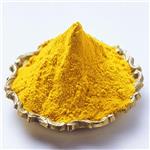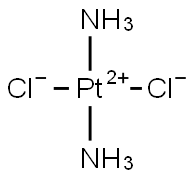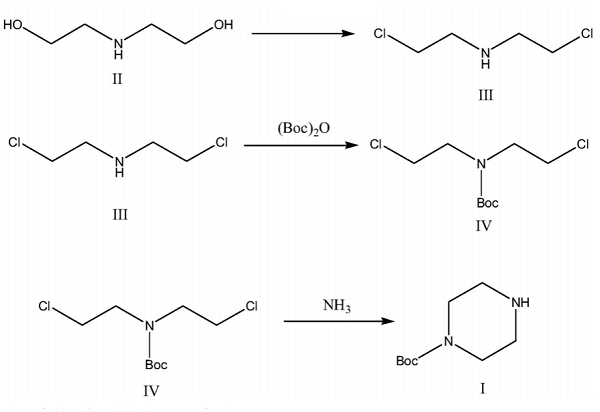Cisplatin: Clinical Applications in Cancer Treatment and its Toxicity
General Description
Cisplatin is a key chemotherapy drug utilized in treating various cancers, including non-small cell lung cancer, ovarian cancer, head and neck squamous cell carcinoma, and breast cancer. Its effectiveness is notably marked in lung cancer, where it improves survival rates, and in ovarian cancer despite a high recurrence rate due to resistance. However, cisplatin's clinical use is hampered by significant toxic side effects, particularly nephrotoxicity, ototoxicity, and gastrointestinal issues. Ongoing research aims to enhance its efficacy through combination therapies and innovative formulations while addressing toxicities to improve overall patient outcomes in cancer treatment.

Figure 1. Cisplatin
Clinical Applications in Cancer Treatment
Non-Small Cell Lung Cancer
Cisplatin is a platinum-based chemotherapy drug that has been widely used in the treatment of various types of cancer. One prominent area of application is in lung cancer, specifically small cell lung cancer (SCLC) and non-small cell lung cancer (NSCLC). SCLC, which accounts for 15% of all lung cancer cases, responds well to platinum-based therapies, making Cisplatin a cornerstone in its treatment regimen. Clinical trials demonstrate Cisplatin’s robust antitumor activity, positioning it as a preferred choice despite its potential adverse effects, such as renal toxicity and nausea. To mitigate these risks, particularly renal toxicity, careful monitoring of urine output and aggressive hydration protocols during Cisplatin administration are essential. For localized NSCLC, Cisplatin is administered post-surgery in conjunction with adjuvant chemotherapy, particularly for more advanced stages. Research indicates that the Lung Adjuvant Cisplatin Evaluation program has shown a 5.3% absolute increase in 5-year survival rates for patients receiving Cisplatin-based regimens, underscoring its significant role in improving outcomes for lung cancer patients. 1
Ovarian Cancer
In addition to lung cancer, Cisplatin is a pivotal agent in the treatment of ovarian cancer, a leading cause of cancer-related deaths among women. Given that most ovarian cancers are diagnosed at advanced stages, Cisplatin is often administered after surgical excision, frequently in combination with taxanes. While this treatment is initially effective, a substantial challenge arises from the high recurrence rate—up to 75% of patients experience a relapse due to the development of chemotherapy resistance. Despite these hurdles, Cisplatin remains a first-line solution, particularly for patients with both resistant and sensitive cancer cell lines. Researchers are exploring various combinations, such as Cisplatin with honey venom, withaferin, and other agents, to enhance efficacy. Notably, advancements such as liposomal formulations of Cisplatin are being studied to overcome resistance, demonstrating its continuing importance in ovarian cancer therapy and the ongoing efforts to maximize its therapeutic potential. 1
Head and Neck Squamous Cell Carcinoma and Breast Cancer
Furthermore, Cisplatin has shown applicability in treating head and neck squamous cell carcinoma (HNSCC) and breast cancer. HNSCC presents a significant challenge due to its high mortality rate, with treatment often incorporating surgery, radiation, and chemotherapy. Although Cisplatin alone is insufficient for HNSCC treatment, its role in combination regimens shows promise in improving outcomes. In breast cancer, Cisplatin is recognized for its efficacy, particularly in managing malignant forms of the disease and extending patient lifespans. As a cytotoxic agent, Cisplatin operates by forming adducts with DNA, ultimately disrupting replication and inducing apoptosis in cancer cells. Its broad applications across various malignancies underscore Cisplatin's significance as a foundational chemotherapy drug in oncology, reflecting both its historic efficacy and the current exploration of combination therapies to enhance treatment success. 1
Toxicity
Toxic Side Effects
Cisplatin is a widely used chemotherapy drug essential for treating various solid tumors. However, its clinical application is significantly hindered by the severe toxic side effects it induces in normal tissues. The prominent toxicity associated with cisplatin includes nephrotoxicity, which is the primary limiting factor impacting patient treatment outcomes. This renal toxicity stems from cisplatin’s accumulation in kidney cells, leading to tubular damage and impaired renal function. Additionally, cisplatin can cause ototoxicity, resulting in hearing loss, and neurotoxicity, affecting the nervous system. Gastrointestinal toxicity, manifesting as nausea and vomiting, is also frequently observed in patients undergoing cisplatin therapy. The understanding of these toxicities is critical since they significantly compromise the overall quality of life for patients receiving cisplatin treatment. 2
Mechanisms and Implications of Toxicity
In addition to nephrotoxicity, cisplatin is associated with other toxicities, such as hematological toxicity, which can lead to reduced blood cell counts and increase the risk of infections and bleeding. Cardiotoxicity and hepatotoxicity are less common but still pose serious risks during treatment. Interestingly, cisplatin has been linked to the development of secondary malignancies, which adds another layer of concern regarding its long-term use. The exact mechanisms underlying these toxic effects remain inadequately understood, complicating efforts to mitigate them. Research into the pathways through which cisplatin exerts its toxicities could pave the way for strategies designed to protect normal tissues while preserving the drug's efficacy against tumors. Understanding these mechanisms is essential to enhance patient safety and comfort during cisplatin chemotherapy, ultimately promoting better treatment outcomes. 2
Reference
1. Dasari S, Tchounwou PB. Cisplatin in cancer therapy: molecular mechanisms of action. Eur J Pharmacol. 2014; 740: 364-378.
2. Qi L, Luo Q, Zhang Y, Jia F, Zhao Y, Wang F. Advances in Toxicological Research of the Anticancer Drug Cisplatin. Chem Res Toxicol. 2019; 32(8): 1469-1486.
);See also
Lastest Price from Cisplatin manufacturers

US $10.50/KG2024-09-19
- CAS:
- 15663-27-1
- Min. Order:
- 1KG
- Purity:
- 99%
- Supply Ability:
- 10 ton

US $0.00/g2024-09-18
- CAS:
- 15663-27-1
- Min. Order:
- 10g
- Purity:
- 97%-102%; EP
- Supply Ability:
- 1000g


